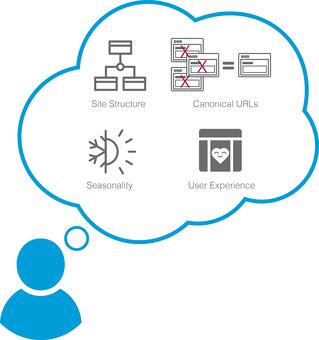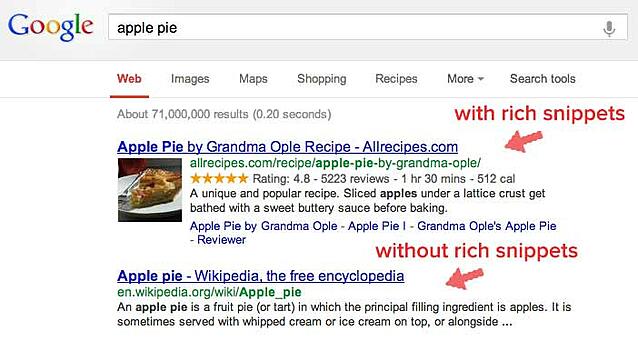Ecommerce SEO (Search Engine Optimization) in its rawest form involves optimizing your site to Google’s ever-changing standards by making your site as user-friendly and as crawler friendly as possible while still being able to sell your products.
When working with clients, one question we hear often is “what is the difference between SEO for any other site and SEO for an eCommerce site?” Well, the answer to this is the technical details and tone. Meaning there are elements in the technical foundation that are crucial on an eCommerce site but don’t have as much impact on other sites. Additionally, the tone of content and keywords are different, in higher variety, and include more calls to action (CTAs).

Ecommerce SEO
Ecommerce SEO is the specialization in SEO for eCommerce platforms. Managing SEO for eCommerce means knowing what technical elements are needed and understanding how they interact with the user experience, indexing, and ranking of a site. It means recognizing how to optimize keywords and content for seasonality, ranking, and conversions, and understanding how social engagement, referrals, marketing campaigns, on-site content, site structure, site code, user experience, and more all play a role in SEO health and overall organic sales.
But what does this really mean? Let us say, for example, you are selling hiking equipment internationally, you have a few categories with a number of products in each. You have an on-site blog and a very active Facebook page where you share hiking stories, and promotions and invite people into conversations with your brand and each other. In this scenario we know to look for a number of technical things like prev/next in the categories listings, language and regional serving code, social open graphs, rich snippets, canonicalization, proper robot instructions, URL parameters, sitemaps, page code status, site errors, site speed, mobile-friendliness, and more. On a content front, we would look for things like duplication, business user input abilities, IMC content use, traffic-generating keyword use, and more. Once the base health is identified we look into the current performance. By looking at the site’s indexing, ranking, page performance, conversion rates, online reputation, and other elements we can create a baseline mark to compare with overtime and during improvements.
What are all these elements?
Ecommerce SEO has many elements to it, some of which we have mentioned. But what are elements really? What do they mean? Below are some definitions and examples of a few of these elements, so you can get a better understanding of what these elements really are and how they work for eCommerce.
Rich Snippets
When a web user searches for a subject or product, they see a number of links. These links, by default, display the site’s URL, the page’s title tag, and the page’s meta description; however, these links can be strengthened with rich snippets. By using rich snippets you can add a number of elements to a search engine result page’s listing. You can choose to include elements like reviews, ratings, product details (including price, inventory status, etc.), and advanced details (ie: song details with play buttons, class times and cost, featured images, and more).
Canonical URL
Many eCommerce sites include products that are listed in more than one category, creating duplicate listings with different URLs. When this happens, search engines like Google do not know which document is the original source, and therefore indexes them all at a lower rank power, creating index bloat. By adding rel=canonical to each page, you identify which pages are the original sources, letting the search engines rank the root pages with a stronger rank power, cutting down on index bloat.
Mobile Friendliness
Mobile-friendliness is often confused with mobile usability. When we say “mobile-friendly” we aren’t referring to whether or not your site can be seen and used on a mobile device. What it means is that your site is usable while being user-friendly. Google’s mobile standard is an excellent guideline for what is considered mobile-friendly. When a site is not mobile-friendly to Google’s standard, it can be given a lower mobile ranking in mobile searches.
Duplication
Duplication can happen in many ways and in many areas including page content, title tags, meta descriptions, alt tags, etc. The more duplication a search engine finds when reviewing a site for ranking and indexing, the lower the power it will assign to that page’s ranking.
With all these elements it is easy for a site to get off track in terms of SEO. In our years of experience, SEO and organic traffic have shown to be one of the more neglected areas of a site – but also one with the most opportunity. Custora has shown that 23% of online ecommerce sales in 2015 came from organic search.1When optimized alongside PPC, there is a proven 25% increase in clicks, and 27% increase in profit, according to Bright Oak.2 This happens because 89% of customers begin their buying process with organic searches.
With a base understanding of what makes eCommerce SEO different from generic SEO and insight on why SEO is so important to eCommerce, you may now be wondering what the ROI potential looks like. For the month of June 2016 (one month after we improved a site for structured data, canonicalization, and language coding) we saw a year-over-year improvement of 10.35% in organic sessions, a 17.09% increase in organic eCommerce conversion rate, and a 25.11% increase in organic revenue.
Contact us if you’re interested in learning more about SEO and eCommerce:
Click Here
Sources:
1 http://digitalmarketingphilippines.com/10-reasons-to-diversify-your-digital-marketing-efforts/


